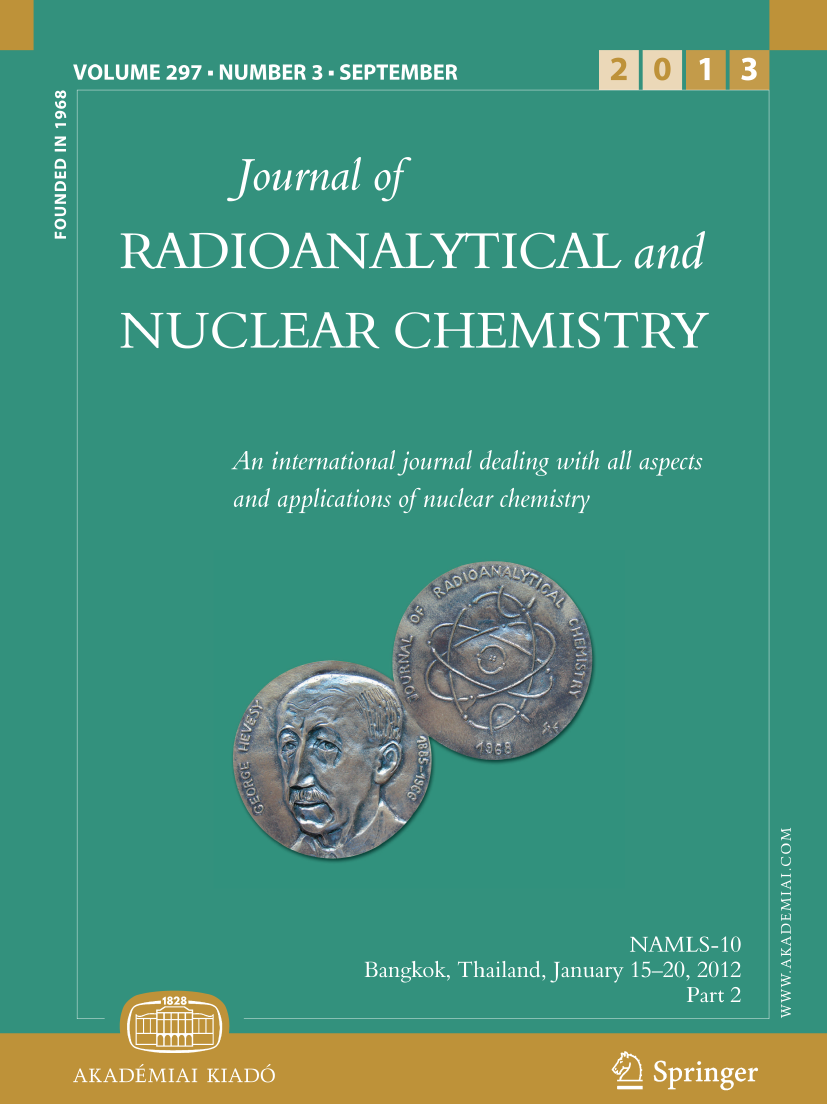Dynamic experimental study on the radon adsorption performance of clay mineral-based walnut shell activated carbon composites
IF 1.5
3区 化学
Q3 CHEMISTRY, ANALYTICAL
Journal of Radioanalytical and Nuclear Chemistry
Pub Date : 2025-01-08
DOI:10.1007/s10967-024-09961-1
引用次数: 0
Abstract
Activated carbon was modified by compounding with three different clay minerals (HNTs, MMT, AT) at a 1% mass ratio, aiming to boost the activated carbon’s radon adsorption capacity. Dynamic experimental studies were conducted to analyze their adsorption performance. HNTs/AC outperformed AC, with an 81% increase in the radon adsorption coefficient and a remarkable 274% expansion in its micropore specific surface area, indicating a positive correlation with radon adsorption capacity. The dynamic radon adsorption by HNTs/AC composites is primarily driven by physical adsorption, which involves two processes:surface adsorption and slow intra-pore diffusion, with surface adsorption being the predominant mechanism.
粘土矿物基核桃壳活性炭复合材料吸附氡性能的动态实验研究
将三种粘土矿物(HNTs、MMT、AT)按1%的质量比复配,对活性炭进行改性,以提高活性炭的氡吸附能力。对其吸附性能进行了动态实验研究。HNTs/AC优于AC,其氡吸附系数提高了81%,微孔比表面积增加了274%,表明其与氡吸附能力呈正相关。HNTs/AC复合材料对氡的动态吸附主要由物理吸附驱动,包括表面吸附和孔内缓慢扩散两个过程,其中表面吸附是主要吸附机理。
本文章由计算机程序翻译,如有差异,请以英文原文为准。
求助全文
约1分钟内获得全文
求助全文
来源期刊
CiteScore
2.80
自引率
18.80%
发文量
504
审稿时长
2.2 months
期刊介绍:
An international periodical publishing original papers, letters, review papers and short communications on nuclear chemistry. The subjects covered include: Nuclear chemistry, Radiochemistry, Radiation chemistry, Radiobiological chemistry, Environmental radiochemistry, Production and control of radioisotopes and labelled compounds, Nuclear power plant chemistry, Nuclear fuel chemistry, Radioanalytical chemistry, Radiation detection and measurement, Nuclear instrumentation and automation, etc.

 求助内容:
求助内容: 应助结果提醒方式:
应助结果提醒方式:


